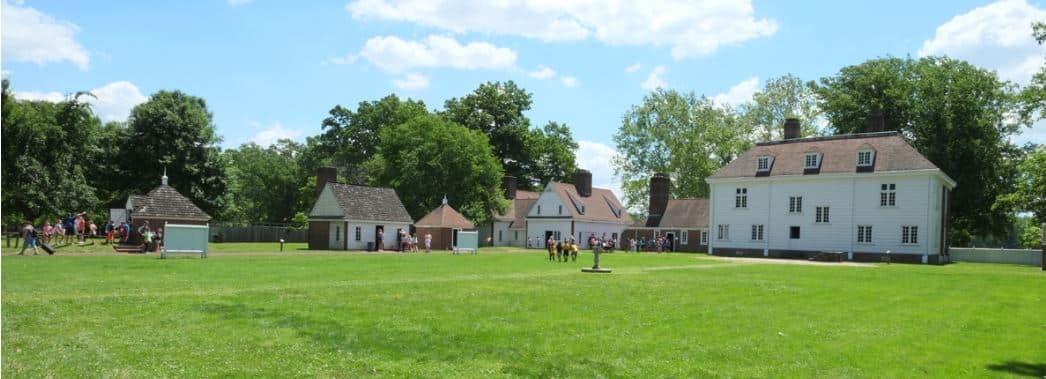
For reservations to experience “nkwiluntàmën: I long for it; I am lonesome for it (such as the sound of a drum)” by Indigenous artist Nathan Young, please go to https://nkwiluntamen.com/
Religious Tolerance
Penn and other Quakers believed that everyone had to seek God in his or her own way. Penn also thought that religious tolerance – or “liberty of conscience” – would create stronger governments and wealthier societies. Other English thinkers in the 1600s shared these ideas. But Penn had the opportunity to act on his beliefs. In Pennsylvania, religious tolerance was the law.
Penn welcomed settlers from all faiths to Pennsylvania. Each of the other American colonies had established an official church, but Penn did not. He sought out religious groups suffering in Europe, and invited them to his colony. He even gave some groups land. Yet religious tolerance did not mean that colonists of all faiths had equal rights. Only Christians could vote or hold political office. But all settlers could take part in the social and economic life of Pennsylvania.
Penn’s belief that “Religion and Policy…are two distinct things, have two different ends, and may be fully prosecuted without respect on to the other” took hold and became one of America’s most important ideals.
Representative Government
During Penn’s time, older forms of government such as the “divine right of kings” were slowly giving way to a belief that stressed individual rights. In 1681, Penn crafted a government for Pennsylvania based on these Enlightenment principles. He rejected models of government that forced laws on citizens against their will. Penn emphasized self-government for the people.
In 1696 the Assembly, an elected body of 36 men with power to accept or reject laws, demanded the power to make laws. While Penn disagreed, he nevertheless believed strongly in representative government. So he reluctantly changed the way Pennsylvania was governed. The will of the people was more important to him than his own ideas about government.
Penn’s ideas inspired our nation’s founding fathers. Penn’s vision lives on in the American government’s most important document, the United States Constitution.
Diversity in early Pennsylvania
Pennsylvania quickly became America’s most diverse colony. Lenape Indians lived near the Delaware River. Dutch and Swedish settlers had farmed and traded in the region since the 1620s. During the 1680s, other European settlers arrived at Penn’s invitation. Some of them purchased slaves from Africa or the Caribbean.
Penn needed settlers with many different skills to build his new colony. So he invited people from many backgrounds and classes to Pennsylvania. Some wealthy colonists immediately became leaders in the fledgling colony. Middle-class people worked as free laborers or small businessmen. And members of the “lower sorts” came as indentured servants.
Pennsylvania, from the beginning and by Penn’s design, was a complex society of people of different ethnic, racial, and economic backgrounds. This model of diversity became the basis for the American “melting pot.”
